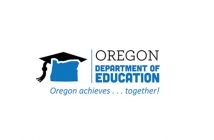(Photo by Karolina Grabowska from Pexels)
Oregon’s Occupational Safety and Health Administration (OSHA) announced a temporary rule that went into effect on November 16, 2020. This temporary rule requires employers to implement several workplace safety measures in a very short amount of time. All 105 pages of the rule and appendix with industry-specific requirements are available at osha.oregon.gov. The temporary rule will be in effect for 180 days, but in the coming months, OSHA will likely create a similar permanent rule.
As of November 16, 2020
- Physical Distancing
Employers must ensure six feet of physical distance between all individuals in the workplace unless the employer determines and can demonstrate that six feet of separation is not feasible for certain activities. This requirement applies to both indoor and outdoor worksites.
- Face Masks, Shields & Coverings
Employers must ensure all individuals on the employer’s premises, who are not eating, drinking or smoking, are wearing a face mask, covering or shield. Face masks, coverings or shields are strongly recommended in all indoor work spaces, but not required when at a location where the employee does not require interaction with others and where at least six feet of distance can be maintained. Face masks, coverings or shields are not required when individuals are stationed at a “private, individual workspace not shared with other people.” Employers are required to provide a face mask, covering or shield at no cost to employees.
- Infection Notification Process
Employers must establish a process to notify employees of work-related contact with someone who has tested positive for COVID-19 and to notify affected employees that an individual who was present in the facility has COVID-19. Notice must be given within 24 hours of the employer learning of a positive COVID-19 test of an individual who was in the workplace or had work-related contact with others.
- Medical Removal of Employees
If OHA, a local public health agency or a medical provider recommends an employee quarantine or isolate due to COVID-19, the affected worker must stay at home and away from other non-quarantined individuals. An employer must allow the affected employee to work from home if available and the employee’s condition does not prevent working. Isolation or quarantine must continue until a medical provider or public health authority determines the employee may return to work. The employee is entitled to return to their previous job, if still available. Employers may not make the employee’s job “unavailable” by filling it with another employee.
- Cleaning
Employers must regularly clean common areas, shared equipment and high-touch areas at least once every 24 hours if the workplace is occupied fewer than 12 hours during a day, or at least once every eight hours if the workplace is occupied more than 12 hours a day. Workplaces with only “drop-in” availability or minimal staffing may rely upon a regular schedule of cleaning and directing employees to sanitize their own work surfaces before use.
- Poster
The “COVID-19 Hazards Poster” on Oregon OSHA’s website must be permanently posted in a central location where workers are expected to see it. An electronic copy of the poster should be provided to employees working remotely.
By December 7, 2020
- Exposure Risk Assessment
All employers must conduct a “COVID-19 exposure risk assessment” that requires feedback and participation by employees. Employers with more than ten Oregon employees or employers with “an exceptional risk workplace” must document in writing their COVID-19 risk assessment, which must include the following:
- The name(s), job title(s) and contact information of the person(s) who performed the exposure risk assessment;
- The date the exposure risk assessment was completed;
- The employee job classifications that were evaluated; and
- A summary of the employer’s answers to 13 specific exposure risk assessment questions, which are listed in the temporary rule.
Workplaces at exceptional risk are further defined in the temporary rule and the appendix to the rule may include additional industry-specific requirements.
- Infection Control Plan
Employers are required to implement an “infection control plan” with six essential elements:
- List of all job assignments or worker tasks requiring use of PPE necessary to minimize employee exposure;
- Procedures employer will use to ensure adequate supply of face masks, coverings or shields and PPE necessary to minimize employee exposure;
- List and description of specific hazard control measures employer installed, implemented or developed to minimize employee exposure to COVID-19;
- Description of employer’s COVID-19 face mask, covering and shield requirements and the method of informing individuals entering the workplace of these requirements;
- Procedures employer will use to communicate with employees and other employers in multi-employer worksites regarding employee’s exposure to an individual known or suspected to be infected with COVID-19; and
- Procedures employer will use to provide employees the information and training required by this rule.
The plan must be specific to the “type of work performed by employees” that is tailored on a “facility-by-facility basis.” If an employer has multiple facilities that are substantially similar, its plan may be by facility type rather than site so long as any site-specific information that affects employee exposure risk is included in the plan.
By December 21, 2020 – Employee Information & Training
Employers must provide information and training on specific topics regarding COVID-19 to employees in a manner understood by affected workers and employees must be able to provide feedback. Oregon OSHA will release training materials in the coming weeks.
By January 6, 2021 – Ventilation
Employers must maximize the amount of outside air circulation through their existing HVAC system when employees are present in the workplace. Employers are not required to purchase new HVAC systems or retrofit existing systems.
Nicole Elgin and Julie Preciado are labor and employment attorneys at Barran Liebman LLP. For questions about Oregon OSHA’s new rule, contact them at nelgin@barran.com or nelgin@barran.com.





